Knife Shopping and Storage: Advice From a Kitchen Pro
http://decor-ideas.org 12/05/2013 21:50 Decor Ideas
Ask any professional chef to name the most important tool in a kitchen, and the answer will usually be the same: good knives. That sentiment is echoed by Lisa Cannelora, a professional kitchen designer who operates Cucina di Cannelora in Alameda, California.
As a former restaurant chef, Cannelora knows her knives. And with the holiday season approaching, she's happy to share her advice on the specific knives you should have in your kitchen, where you should store them and how to protect them (and yourself) from harm.
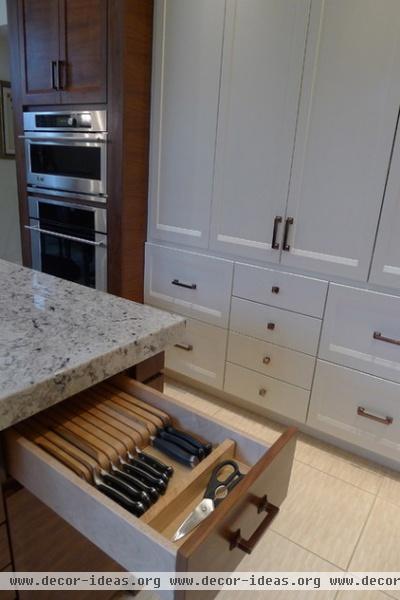
We know a good knife is important, but what exactly makes a knife “good”? Go to the knife section of a home goods store and you could be overwhelmed by the options.
Resist the urge to take the easy way out. “We always recommend to our clients that they do not purchase the full set,” Cannelora says.
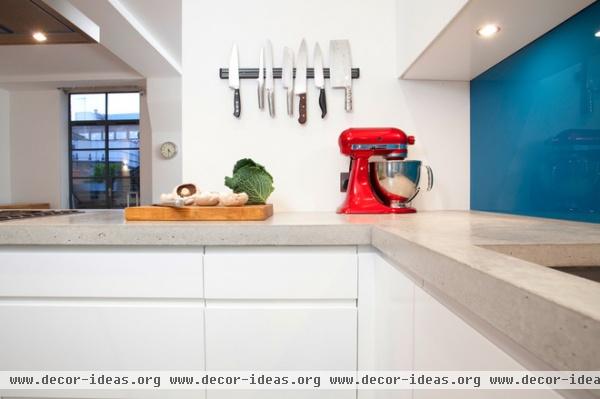
Instead, she recommends limiting a collection to the most useful types of knives. According to Cannelora, those include:
• 8-inch chef knife
• 1 or 2 paring knives
• Bread knife
• Japanese-style vegetable knife
• Chinese cleaver (if you cut whole chickens)
Optional:
• 10-inch chef knife
• Meat-carving knife
• Boning knife
• Butcher knife
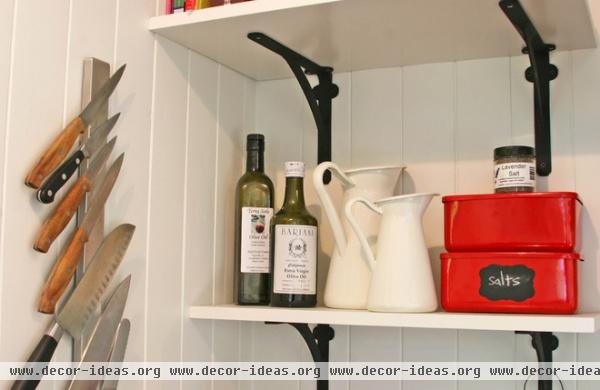
Where to keep knives. The best place to store knives is where they’re needed most. However, that doesn’t mean you have to keep all knives in the same spot. According to Cannelora, “Knives can be stored in different locations in the kitchen if the space is large enough to have multiple stations. Veg prep, for example, may be in a different spot than where you make sandwiches or slice or butcher meats.”
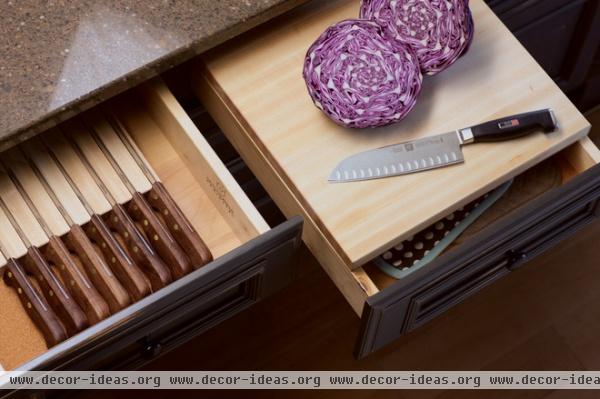
If you're building a new kitchen, figure out where you wish to accomplish each of these tasks. Then find the most sensible knife location for each workstation. No matter how many workstations you have, each will require its own cutting board.
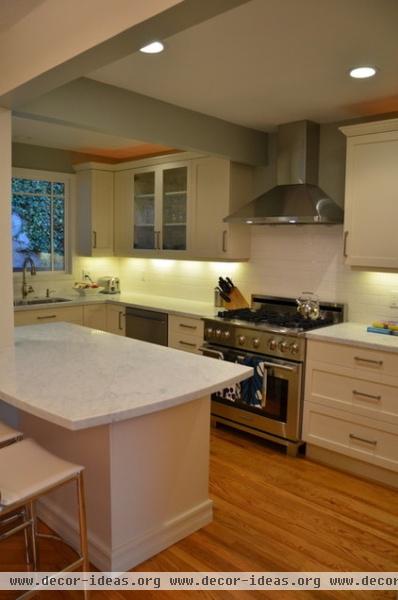
Storage options. Whether designing a new kitchen or rearranging an existing one, Cannelora prefers to store knives on a wall-mounted magnet or in a countertop knife block. “Those two options make knives most easily accessible,” she says.
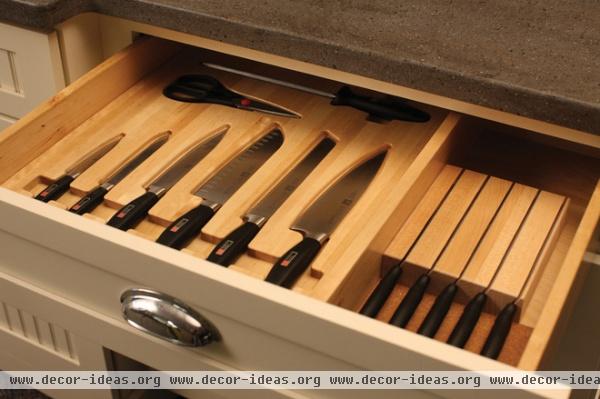
“Though,” she continues, “if counter and wall space is an issue, then I’d suggest storing knives in a wooden knife holder in a drawer closest to the workstation.” With prescribed slots for each blade, these drawer inserts help prevent accidents while you're searching for the right tool.
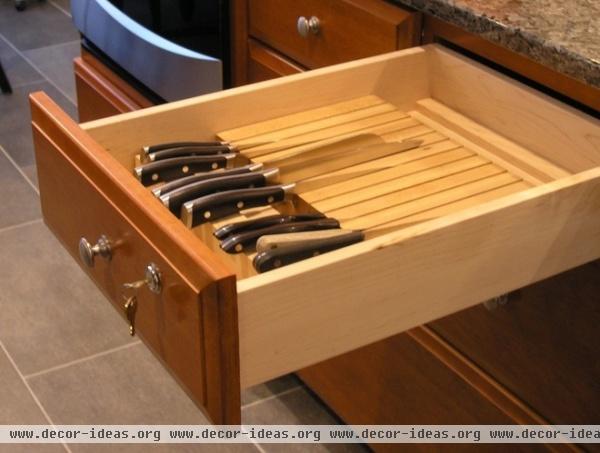
If this option raises safety concerns for you, consider investing in a locking knife drawer, like this one.
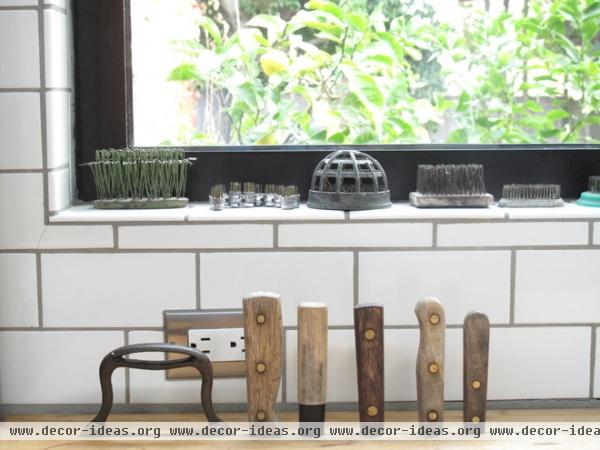
Another option for keeping knives close at hand but out of children’s reach is a built-in countertop knife block. For this installation the carpenter cut slits in the wooden countertop behind the dishwasher. This low-tech setup works because the blades are completely encased, preventing hands from tangling with the blades from below.
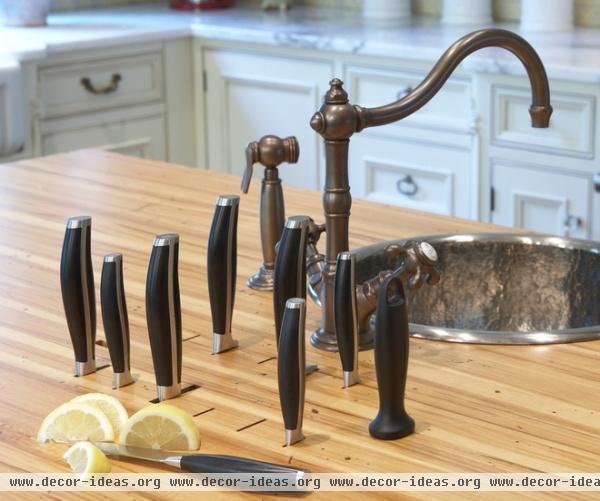
If you're considering this idea for your kitchen, keep in mind that you’ll need as much clearance underneath the countertop as the knives are long. Knives must be completely encased so blades can’t interfere with the contents of nearby drawers or be exposed to any lower cabinets.
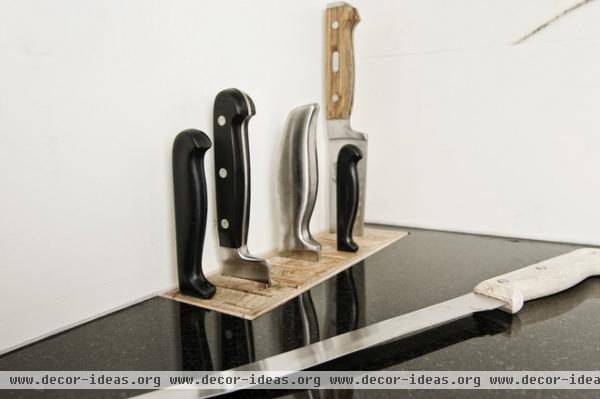
Here a knife block is built into a stone counter.
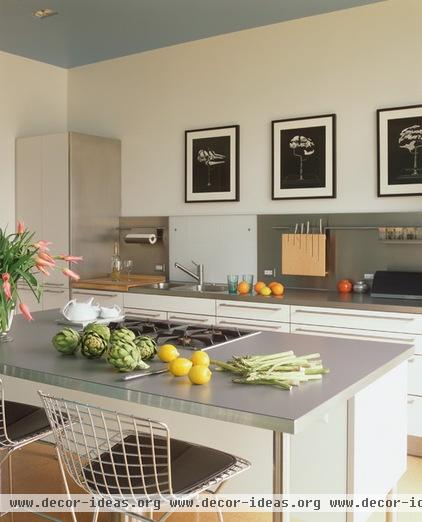
Safety. When it comes to knives, safety is the first priority. Dull blades are a frequently overlooked safety factor. “Dull knives are dangerous because you force cuts,” Cannelora says. The extra effort can result in accidents.
“Good-quality knives hold a sharp edge longer,” she continues. “Plus, they’re customized for better comfort in your hand, which ultimately gives you more control.”
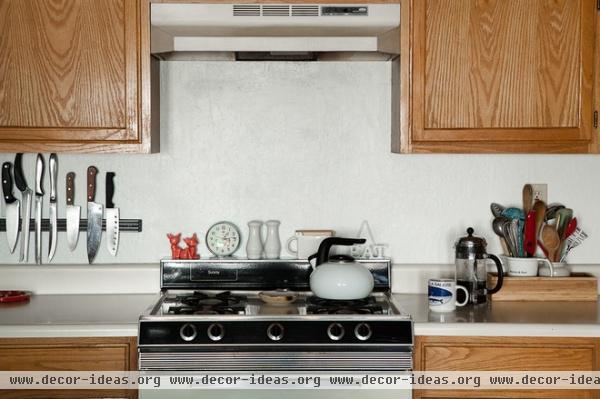
More safety tips:
• When you're finished with knives, leave them adjacent to the sink (not inside) until they are ready to be washed.
• Never put knives in a bowl or sink full of soapy water. A knife lurking under suds is as dangerous as a hiding rattlesnake.
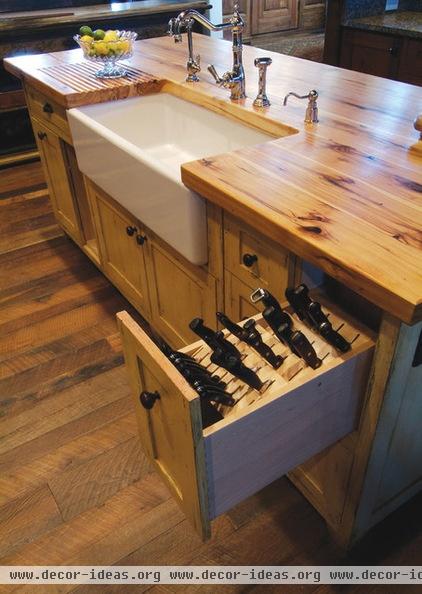
• Keep a clean, wet rag at your workstation to wipe knives on as you cook.
• If you have children in your home, never leave knives at the edge of a counter or within a child's reach.
• Never let children play with knives. When they are old enough, teach them how to hold and carry knives properly. Knives should be carried by the handle with the tip facing the floor.
• If a knife drops, do not try to catch it. Let it fall to the floor.
The knife drawer shown here is best for an adults-only household.
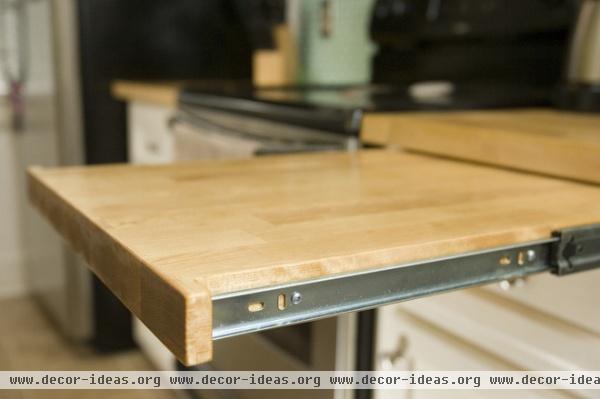
Sharpening. Cannelora recommends having knives professionally sharpened when needed. Between visits, she hones her blades with a porcelain knife sharpener. To keep knives sharper longer, she recommends using a wooden cutting board.
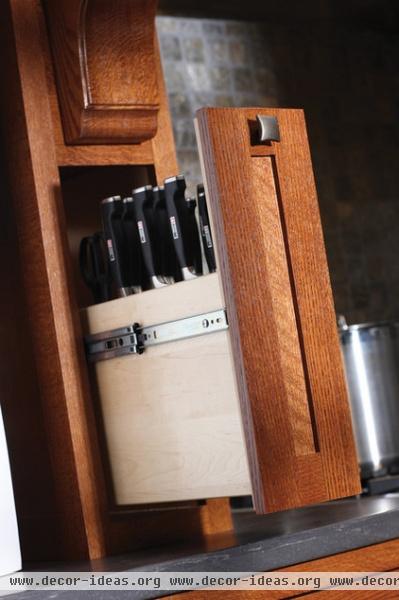
Here's to a season filled with delicious home-cooked meals and no accidents!
Tell us: How do you store your knives for maximum efficiency and safety?
Related Articles Recommended












